A Rainy Day Walk in Vicenza – Part 2

Hello friends. After visiting the cathedral I returned to Garibaldi Street and soon saw the most important building in the city: the Basilica Palladiana. On the left was a place recommended by locals, a restaurant called Dorien. Here you can have drinks like aperol spritz or enjoy an aperitif. I know two families who live in Vicenza and they had told me that Righetti and Dorien were must-tries. These are really important places in terms of gastronomic experiences in Vicenza.
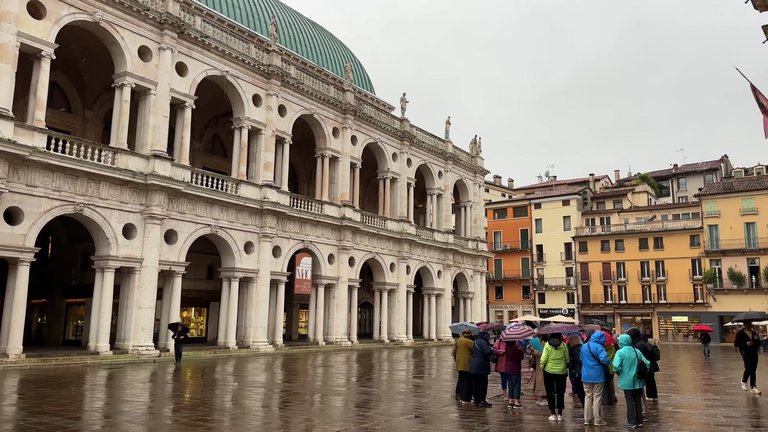
I arrived at Piazza Palladio. This was no coincidence because on the right stood Palladio’s greatest work. This masterpiece carried both the city and Palladio’s fame to the entire world: the Basilica Palladiana.
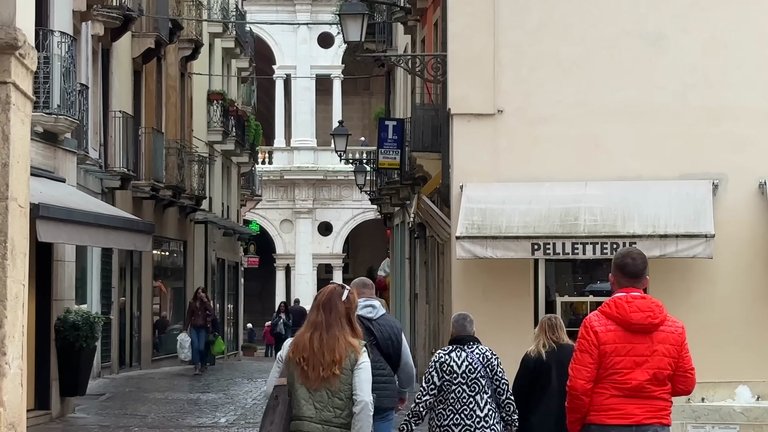
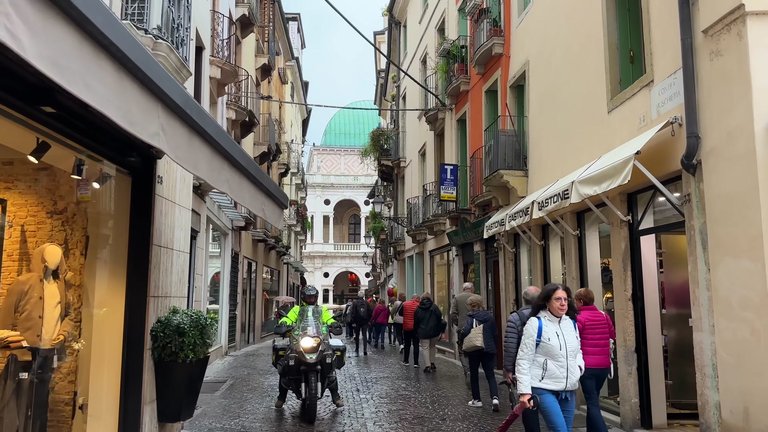
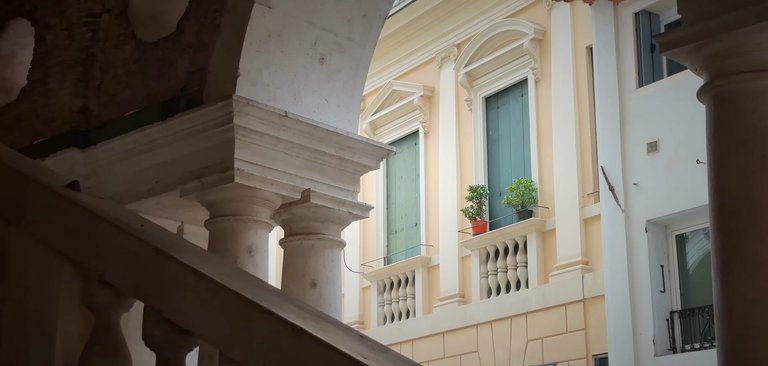

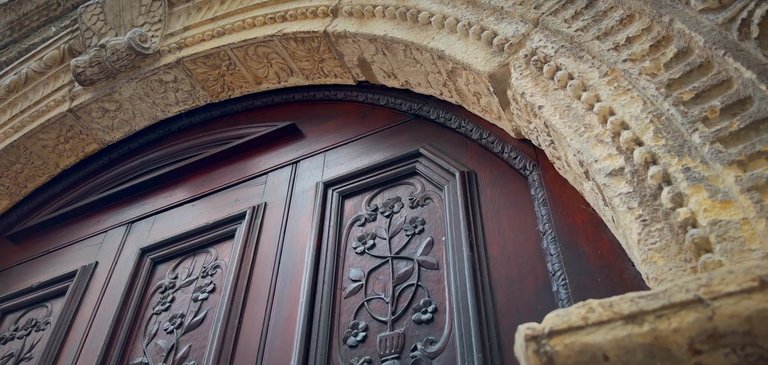
Then I passed through a gallery. Honestly, Vicenza does not have as many of these types of galleries as Padua or Bologna. In those cities, the widespread construction of galleries was an architectural phenomenon. I had noticed the same in Turin. People can walk while being protected from the sun or rain.
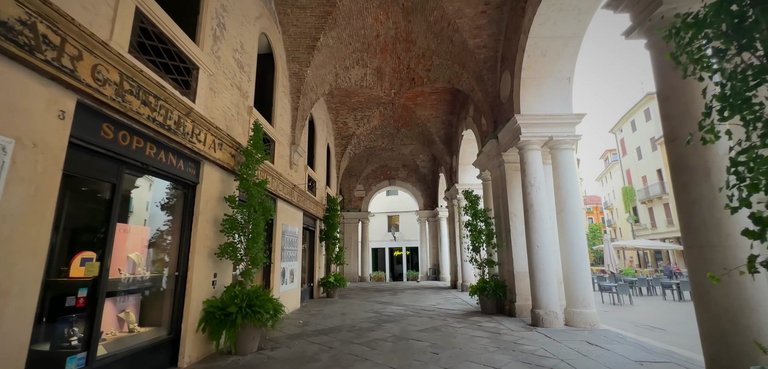
I want to tell you about the Guelfs and Ghibellines. You may say we already know this. But believe me, it is important for understanding what I will explain. In short, the Guelfs supported the Pope and the Ghibellines sided with the Holy Roman Empire, in other words, the emperor. From the 10th to the 15th century, these two groups struggled for power in Italy. Dante also mentions this in the Divine Comedy. He was not a Guelf, but leaned toward the Ghibellines and was exiled from Florence because of politics. Why am I giving this information? Because the magnificent Venetian-Gothic style house I stood in front of once belonged to the Guelf Pegga family. When the Ghibellines won the elections, this family had to flee Florence and settle in Vicenza.
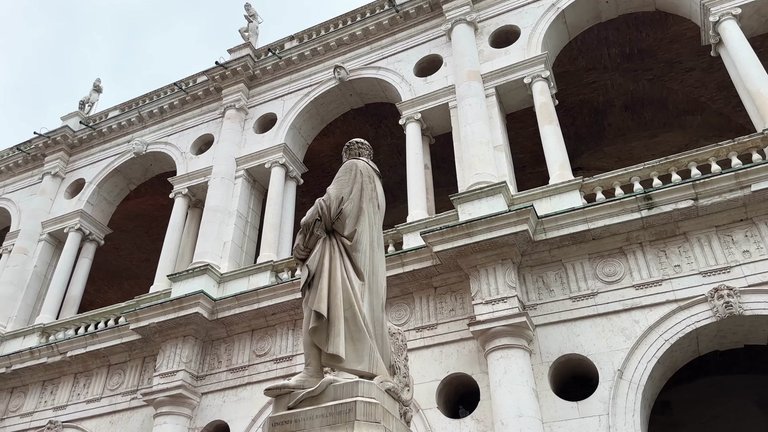

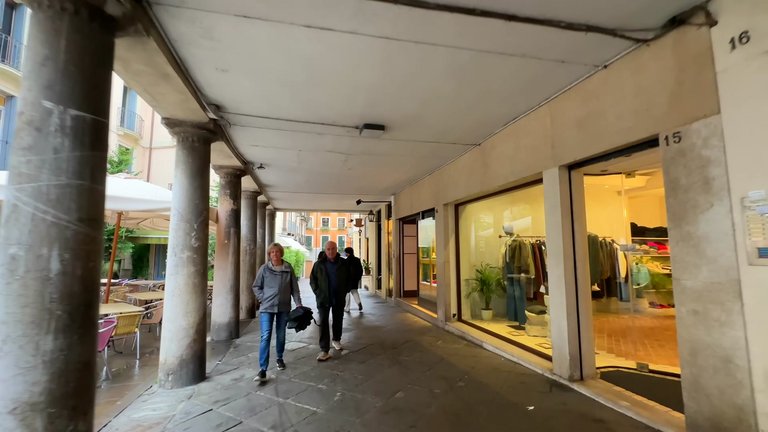
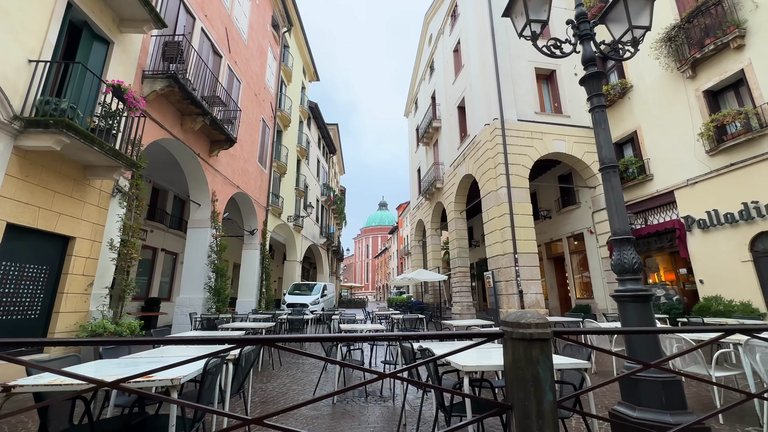

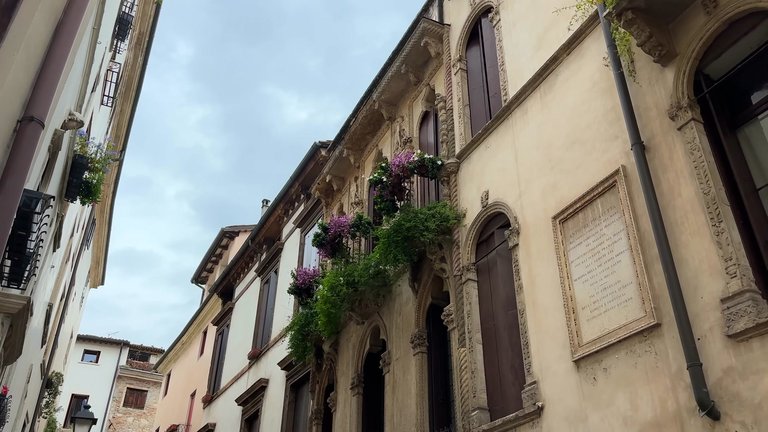
I must also mention Antonio Pigafetta. He was one of those who joined the first circumnavigation of the world under Magellan’s command. Pigafetta was among the few who participated in this historic journey that began in 1519 and ended in 1522. Five ships and 270 people had set out, but only 18 returned. Pigafetta was one of those few. He had been wounded in a battle in the Philippines but survived. Thanks to the detailed journal he kept throughout the journey, we know so much about this voyage today.
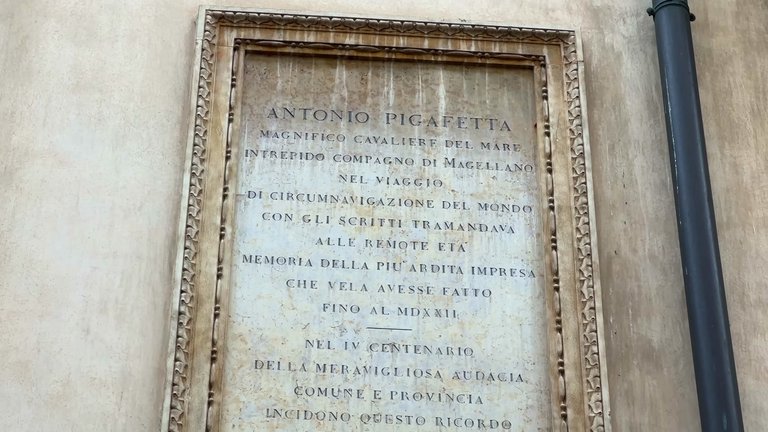
Once he experienced an odd event in the Cape Verde Islands. According to his journal, the date should have been Wednesday July 9, but the locals insisted it was Thursday July 10. This was a typical issue caused by the time difference for those traveling westward.
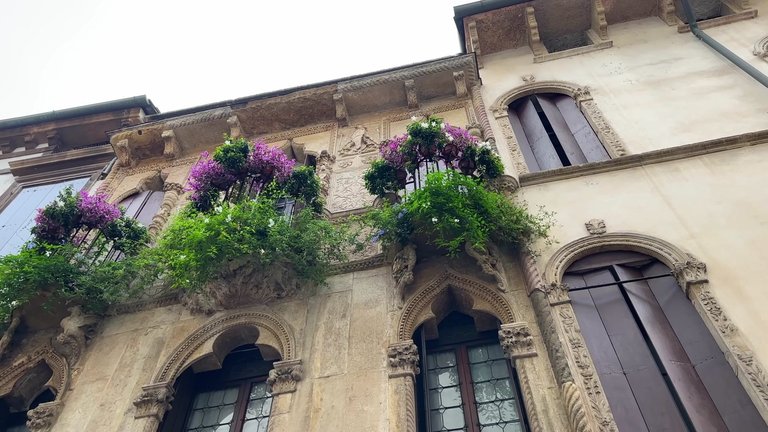
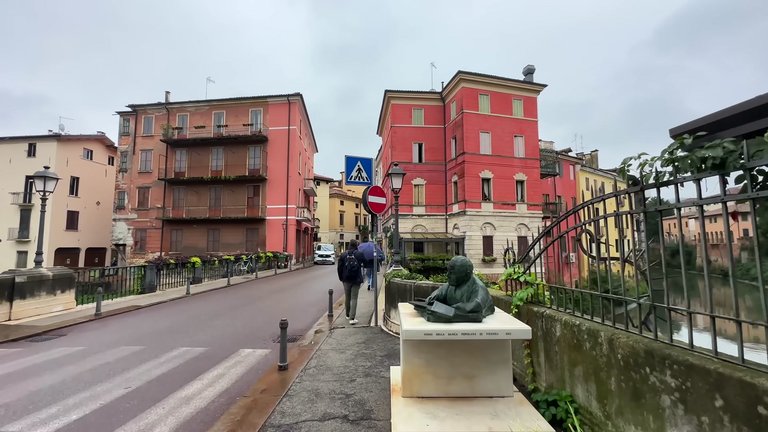
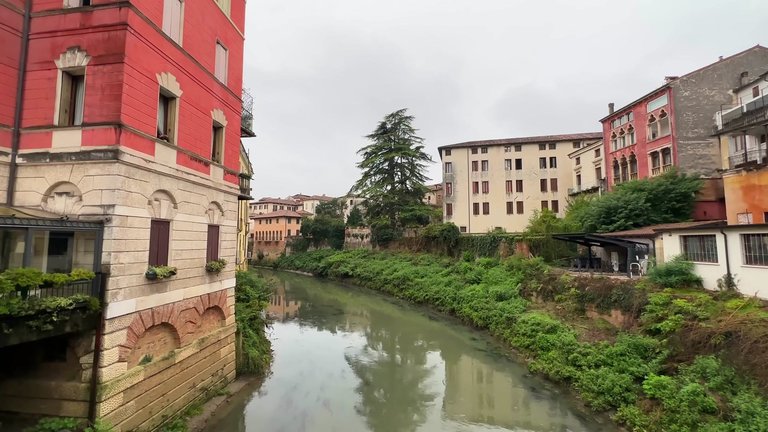
Then I arrived at a beautiful spot. A romantic scene surrounded by greenery. I started looking at the San Michele Bridge. It was built in 1620 with stones from a nearby church. The architects who built the bridge also worked on the Rialto Bridge in Venice.
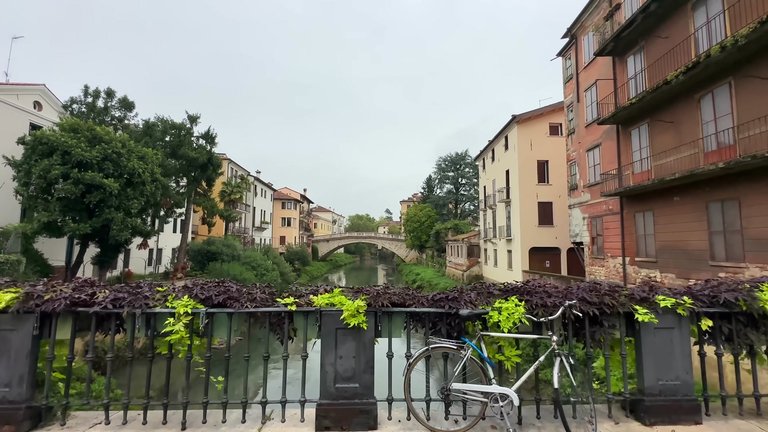
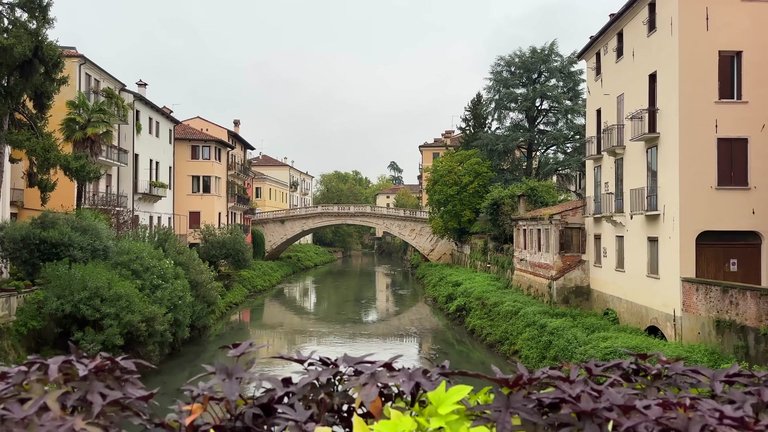
As I continued walking the rain intensified. I walked along with the sound of bells ringing around me. I returned to the front of the Basilica Palladiana. Although this structure is called a basilica, it has no religious function. It was initially built in Gothic style, but at the end of the 15th century, loggias were planned to be added. These additions were unsuccessful and the building partially collapsed. For forty years it remained half-ruined. In 1546 a competition was held. Important architects from Venice participated. Palladio at that time was an unknown young architect. Yet with the support of Gian Giorgio Trissino, he won the project and created the masterpiece we see today.
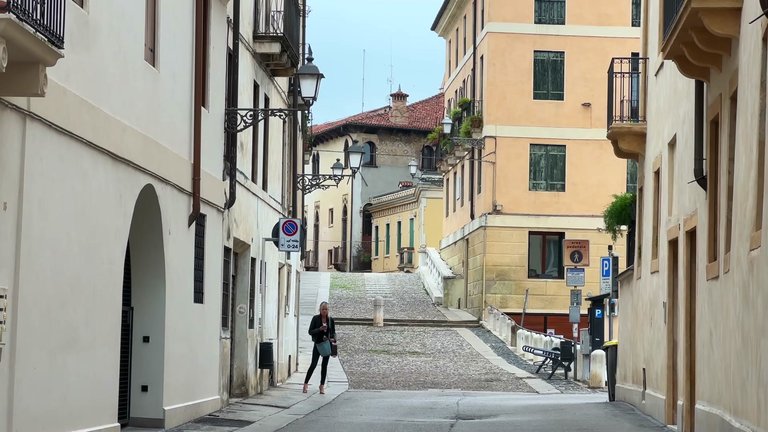


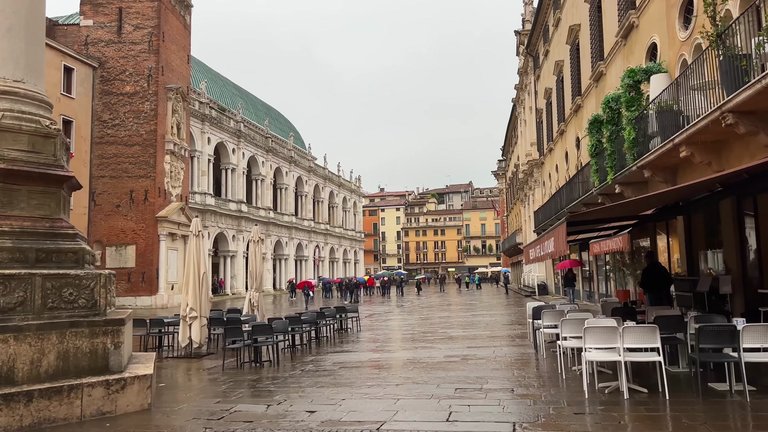
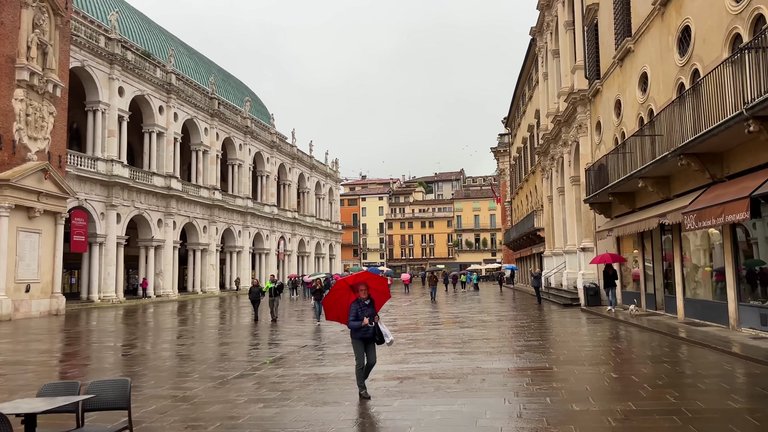
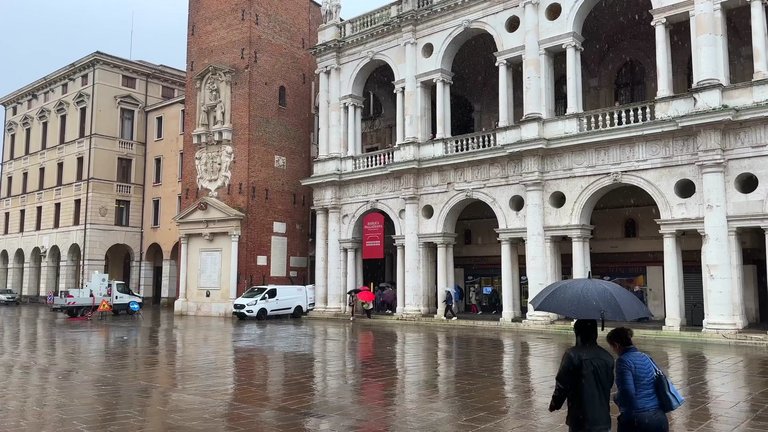
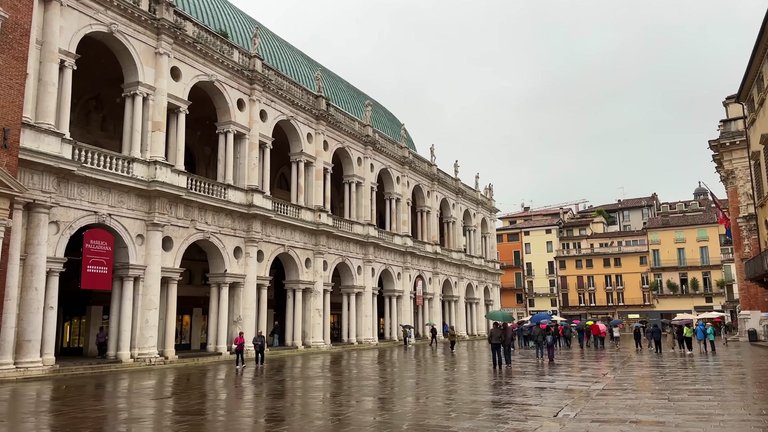
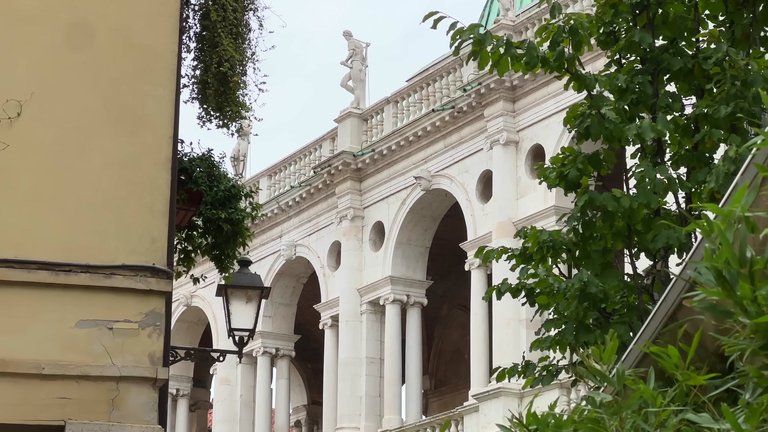
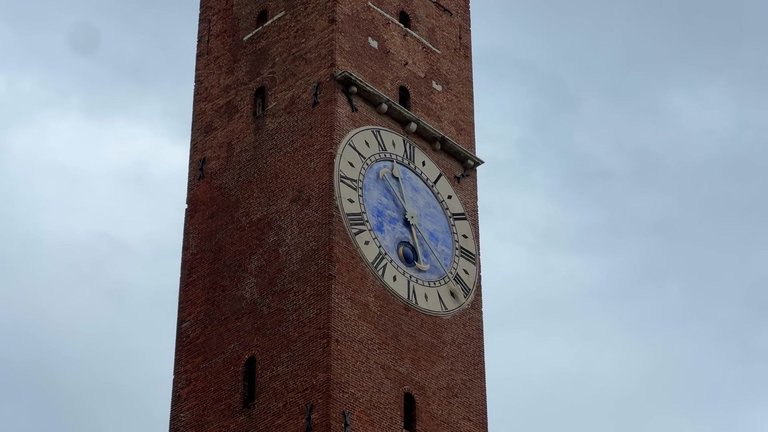


Next to it stands the tallest structure in Vicenza, the Bissara Tower. This 82-meter-high tower was built in the 10th century and became a symbol of the city. If we were to climb Monte Berico Hill, we could see all these buildings in a panoramic view. But it was raining so heavily that even taking a step was difficult.
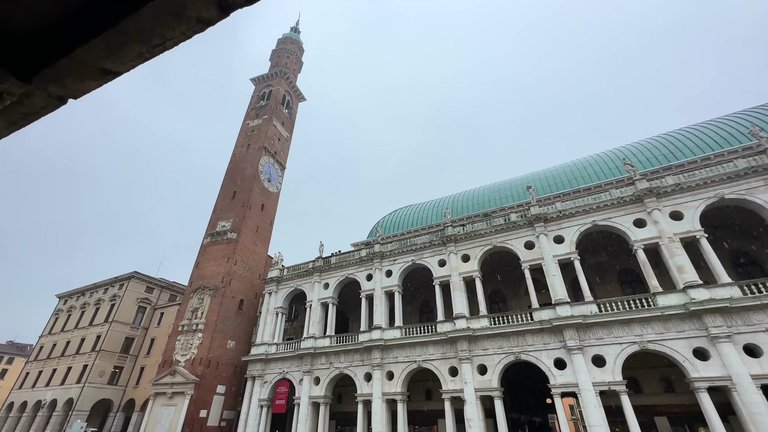
Luckily Palladio’s masterpieces stood before me. For example, the Loggia del Capitani. This structure has been associated with the victory against the Ottomans in the Battle of Lepanto in 1571. However, it was most likely designed in the 1560s before the war. It was built for Venetian administrators. Its facade resembles triumphal arches in Rome. The side facades depict spoils taken from the Ottomans.
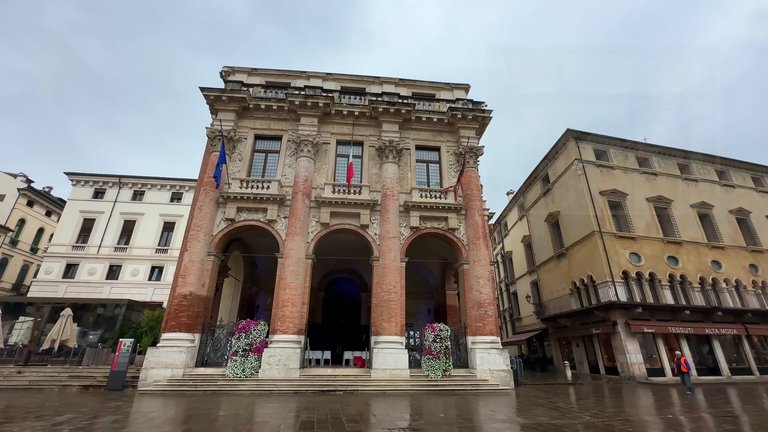
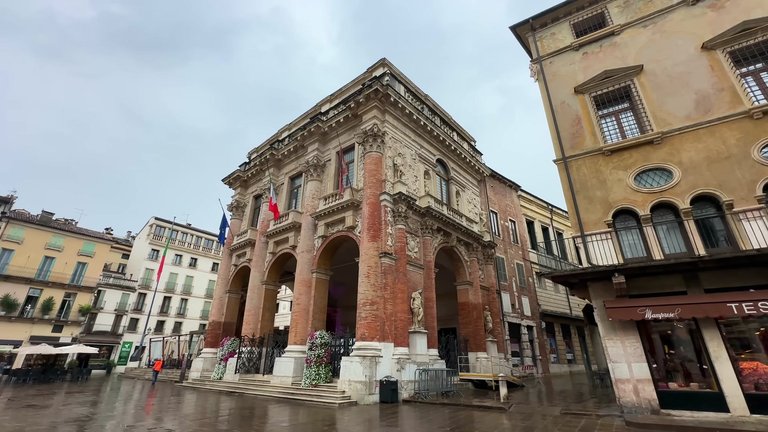
My next stop was the Palazzo del Monte di Pietà. Built between the late Gothic and early classical period, its facade is 72 meters long. A part of the building houses the Church of San Vincenzo. This church was established in the 14th century and later renovated in the Baroque style.
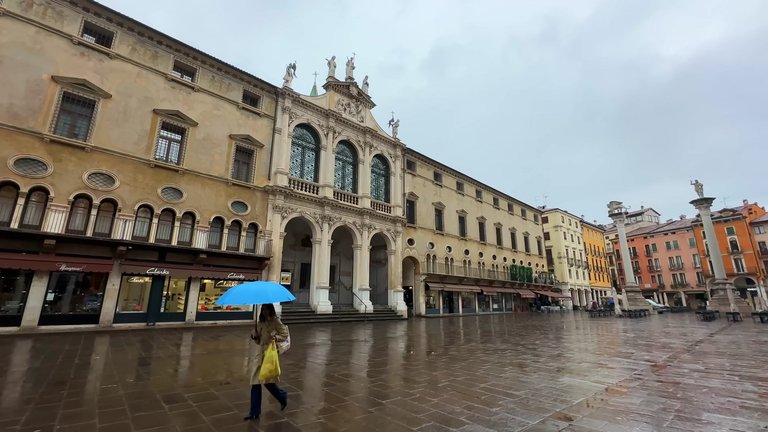
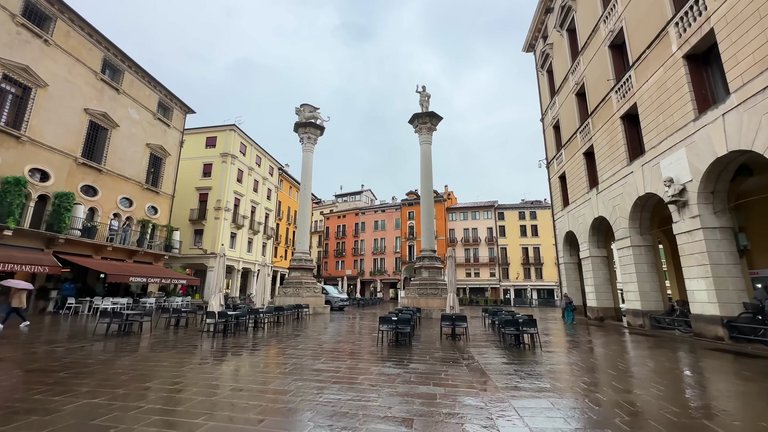
The rain still continued but it had eased a little. Walking in this city is a great pleasure. I continued my walk and reached Palladio Street. I was looking for a shelter. I just wanted to quietly listen to the sounds of the city.
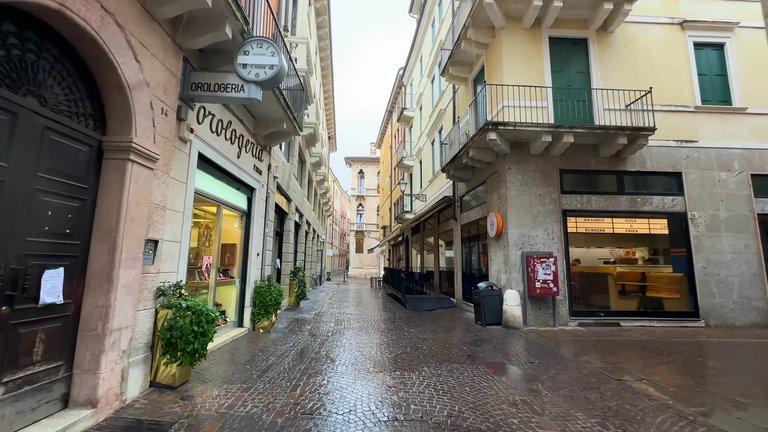
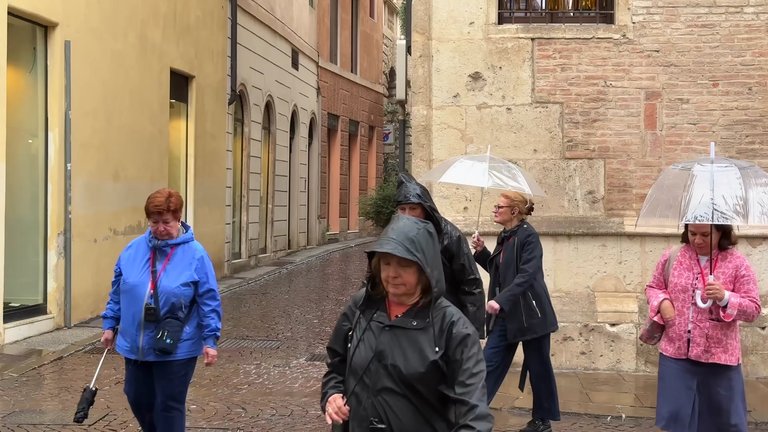
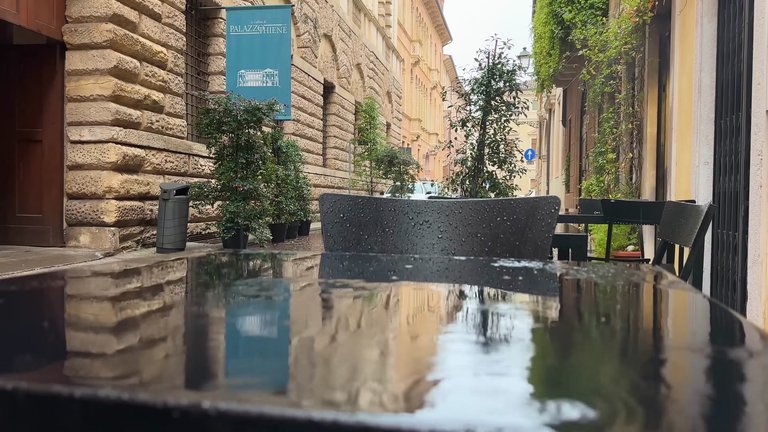
How beautiful are those moments when the city sounds feel like music. As if they are born from nowhere and appear at just the right time. I entered the courtyard of the Palazzo del Tine. Young Palladio had begun working on this building complex with an experienced master. After the master passed away, it was Palladio himself who completed it.
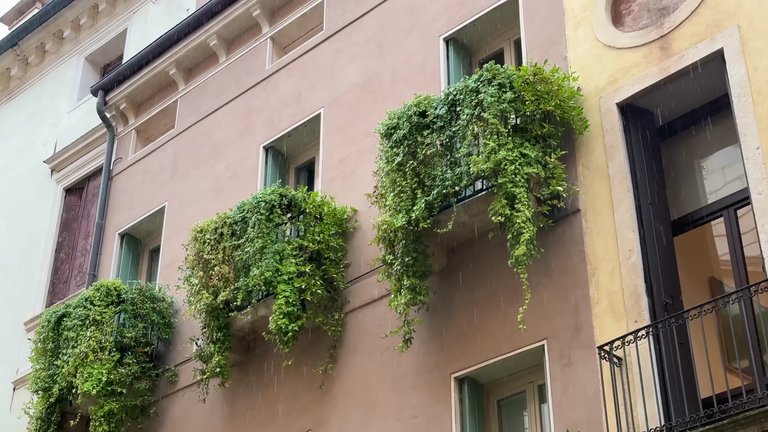
Sheltered from the rain I witnessed the richness of this building and the power of the Tiean family. This family ruled Vicenza for a long time or at least had a strong influence on the city’s politics.
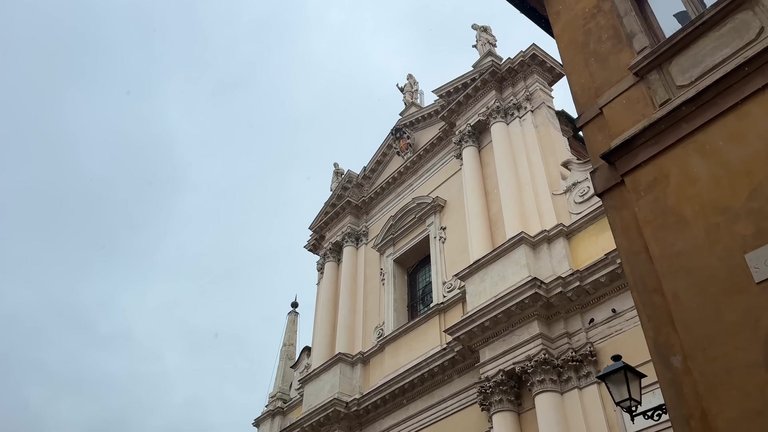
I could see the silhouette of the Church of Santa Stefano. This church is a fine example of Baroque architecture, which is rarely seen in Vicenza, a city known for its classical style.
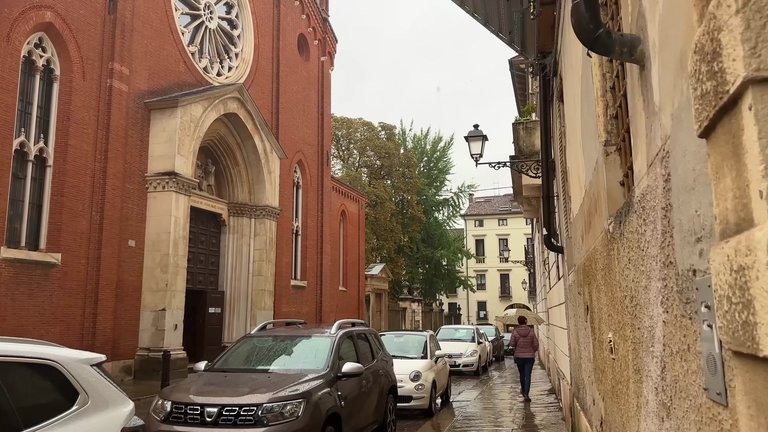
I would also like to briefly touch on Vicenza's history. The first settlements were established by the Celts, followed by the Roman Empire. Later came the Goths, Lombards and Franks. The Scaliger family ruled the area for quite a long time. Then from 1404 the Venetian Republic took control of the city until 1797. After that it came under Austrian rule. Following a short period of Napoleonic influence, it became part of Italy in 1866.
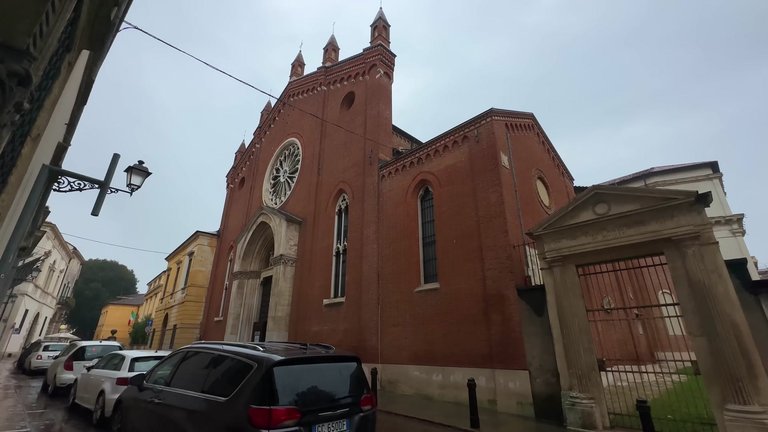
I reached the front of the Church of Santa Corona. This is a very important sacred site for Vicenza. In fact andrea Palladio was originally buried here. The Valmarana Chapel, designed by him, is also located here. The church was built in 1261 in Gothic style. What is interesting is that the local bishop Ludovico I brought a thorn from the crown of thorns placed on Jesus’ head. This church was built almost like a grand jewel box for that thorn.
There is a very beautiful garden here, but I could not enter due to the rain. I carefully passed by the roadside. A little further ahead I saw one of the famous northern Italian arcades. I decided to take shelter there. Finally these arcades proved useful to me. I wish I had used them to protect myself from the sun, but unfortunately it was humid and only sixteen degrees.
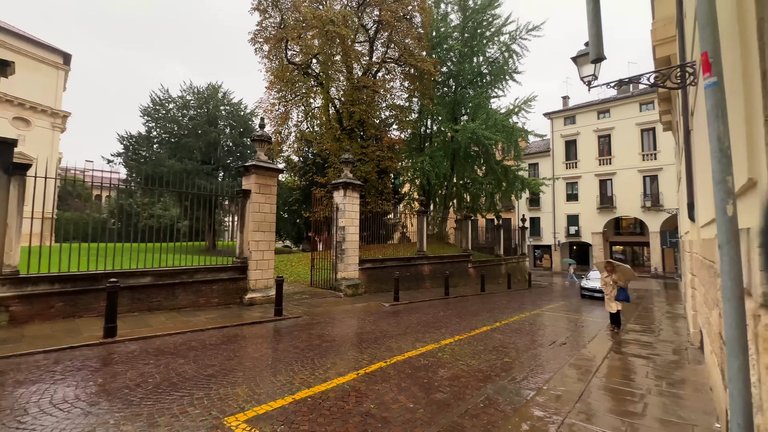
Then I returned again to Palladio Street. I arrived at the other end of the square where I had started the tour. I approached the final building on my route, the last palace, the Palazzo Chiericati, designed by Palladio but completed in the 20th century. Count Chiericati died in 1557, so the building was left incomplete and other masters continued the work. This was a frequent situation for Palladio. Projects he started were left unfinished for various reasons.
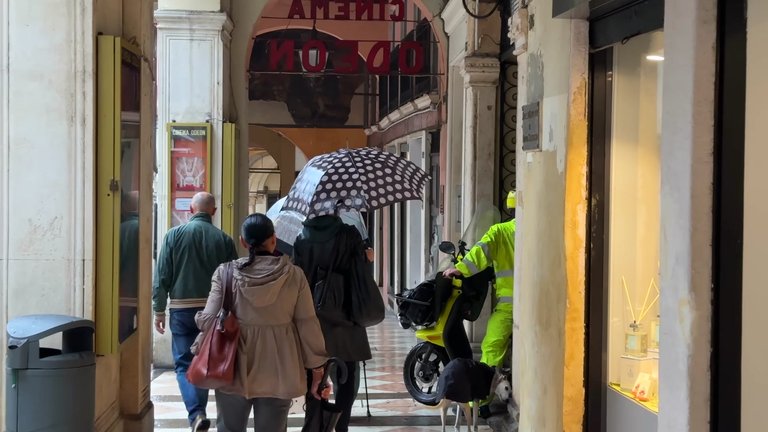
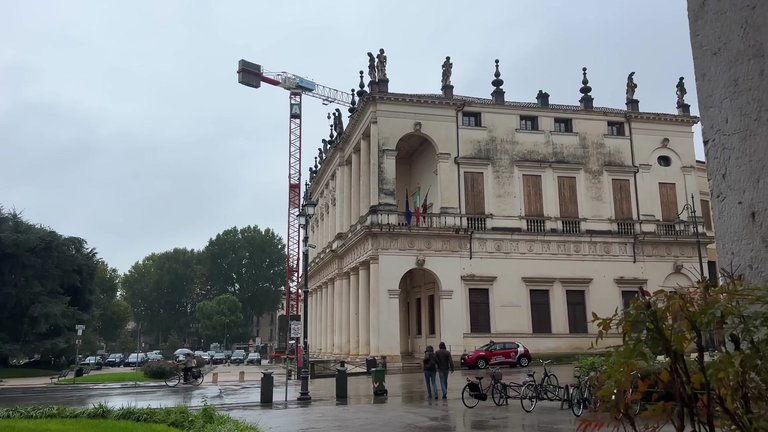
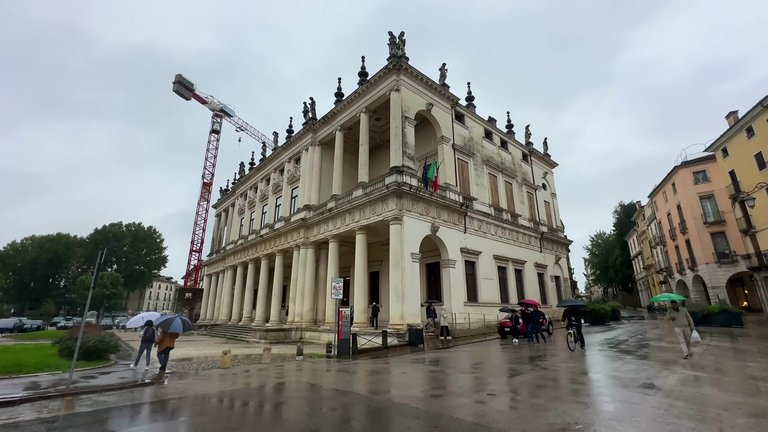
I hope this walk has brought you a little closer to the spirit of Vicenza.
Thank you very much for reading.
See you again soon.
You can check out this post and your own profile on the map. Be part of the Worldmappin Community and join our Discord Channel to get in touch with other travelers, ask questions or just be updated on our latest features.
Congratulations @annativa! You have completed the following achievement on the Hive blockchain And have been rewarded with New badge(s)
Your next target is to reach 30 posts.
You can view your badges on your board and compare yourself to others in the Ranking
If you no longer want to receive notifications, reply to this comment with the word
STOPHiya, @glecerioberto here, just swinging by to let you know that this post made it into our Top 3 in Travel Digest #2601.
Your post has been manually curated by the @worldmappin team. If you like what we're doing, please drop by to check out all the rest of today's great posts and consider supporting other authors like yourself and us so we can keep the project going!
Become part of our travel community:
Thank you so much 😍
You are very welcome @annativa! it was well deserved. ☀️
We are already looking forward to reading more about your adventures!